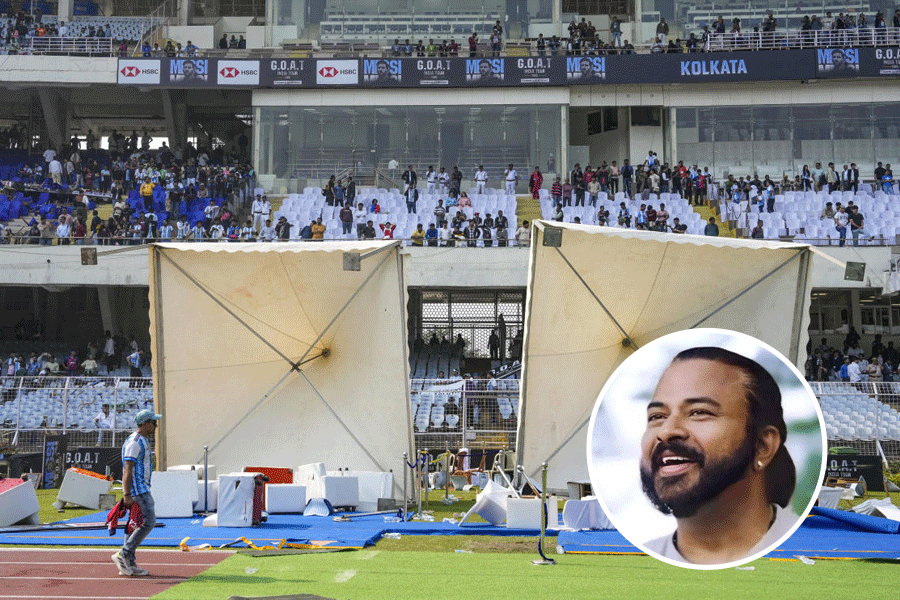New Delhi, Nov. 6: In a building in north Bangalore, engineers prepared tonight to trigger the first of six firings of an engine aboard India’s Mars orbiter spacecraft to nudge it initially into higher orbits around Earth and eventually into a trajectory towards Mars.
The first firing is scheduled at about 1:20AM on November 7 and is intended to place the spacecraft into a new orbit around Earth with its most distant point about 28,900-km in contrast to about 23,500-km yesterday, senior Indian Space Research Organisation officials said.
Since the launch yesterday, engineers at Isro’s mission control centre in Bangalore have been monitoring the spacecraft’s health, relying on a steady stream of data from the orbiter’s myriad subsystems pouring in and reflected on their computer screens.
“We’re monitoring some 1400 to 1500 parameters, and the information is updated every 32 seconds,” an Isro told The Telegraph. The readings range from the temperatures and voltages in the spacecraft’s subsystems to information about its orientation to the performance of the solar panels to generate onboard power. “We’ve also been monitoring the health status of the five scientific payloads,” the official said.
Isro’s Indian Deep Space Network (IDSN) facility at Byalalu, an hour’s drive from Bangalore, will help track and talk to the orbiter during its 10-month voyage to Mars. But a more advanced DSN run by the US National Aeronautics and Space Administration’s Jet Propulsion Laboratory will help fill gaps in coverage and provide backup.
“We’re tracking the Mars orbiter mission continuously now and providing orbit determination solutions for their Earth burns as backup to the Isro flight dynamics team,” Susan Kurtik, the DSN mission interface manager for the Mars orbiter mission told The Telegraph.
The JPL has antennas in California, Spain, and Australia. “We can fill gaps when (Isro) doesn’t have coverage — our cover began yesterday and will be sprinkled throughout the cruise and insertion into orbit around Mars,” said Wayne Sible, deputy manager at DSN.
While the ISDN was successfully used to track Isro’s lunar orbiter Chandrayaan-1 in 2008-09, the station has never been used to track objects in deep interplanetary space. The ISDN will need to validate its capabilities by comparing its results with the JPL-DSN results.
The IDSN ground stations have an 18-metre and 32-metre antennas. The JPL-DSN has larger 34-metre and 70-metre antennas, which Sible said, could provide better command capability if more power is needed.
The JPL-DSN’s large 70-metre antenna is expected to play a critical role during attempts to insert the spacecraft into an orbit around Mars in September 2014. “While Nasa support is an extremely important enabler and critical to the mission, we don’t want to lose sight of the fact that this is India’s accomplishment,” Kurtik said. “We’re sharing expertise and resource to help them become partners in deep space exploration.”
The five orbit-raising-manoeuvres between November 7 and November 16 will be followed by a sixth firing of the engine a little past November 30 midnight that will drive the spacecraft into a path to rendezvous with Mars in next September.










